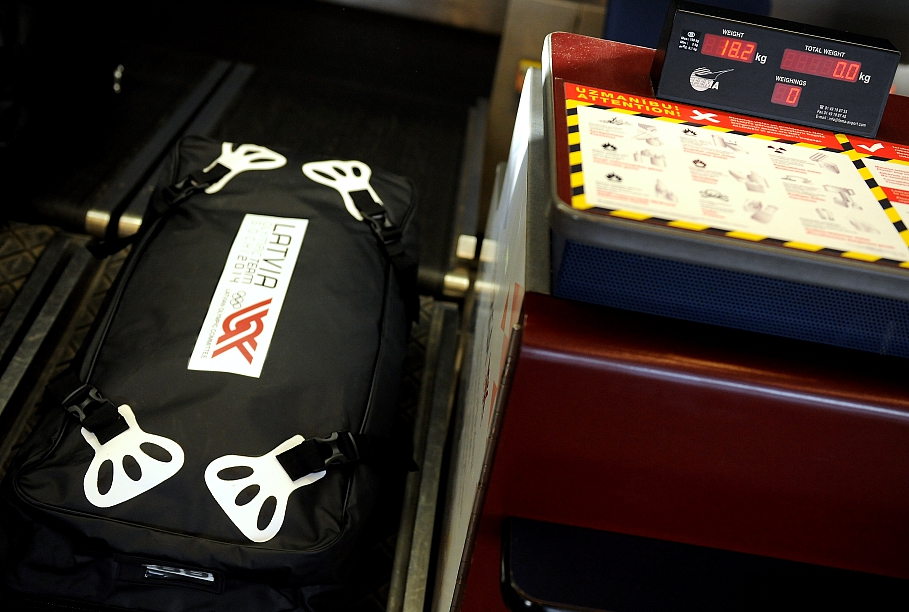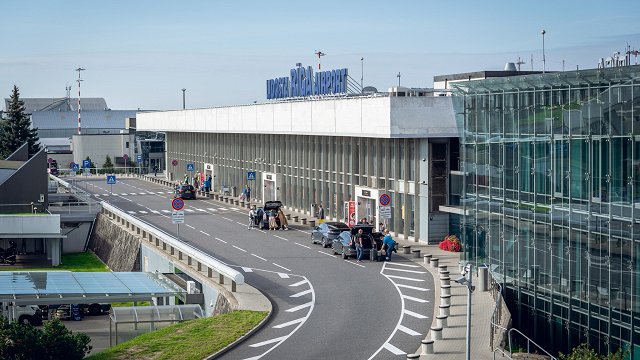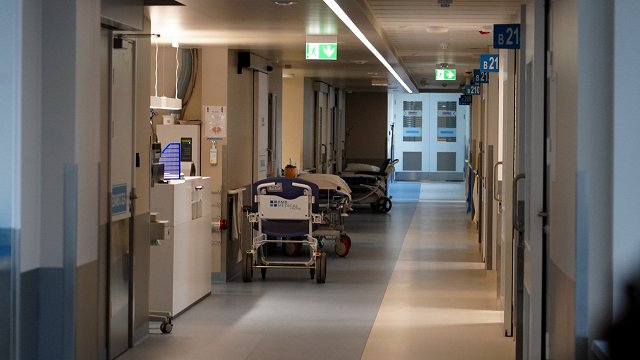Last week leaders of the RIX management and Transport Ministry proudly rolled out their brand new infrastructure, built with co-financing from the EU Cohesion Fund. Up until now the infrastructure’s development has taken around €80m, for which the runway surface was repaved, gates rebuilt, new taxiing lanes and other essential objects upgraded.
Meanwhile, the baggage handling facilities remain unapproved for putting into operation according to objections lodged by the state emergency rescue agency VUGD.
RIX board chairman Andris Liepiņš told Latvian Radio the procurements needed to avert the expressed objections of the VUGD has just been finished.
“The storage room truly has not yet been put into operation, but what is important is that the procurement has in principle been completed for those remaining essential works to be done in the next few weeks to get the baggage storage facilities in line with the fire safety requirements,” he pointed out.
Liepiņš, who was just appointed as the airport’s chief manager at the end of last year, did not deny that despite the VUGD’s filed objections, the facility had been operating for a long time already.
“Yes, a while now. I found this to be the case upon starting work here, that there is not full compliance between the baggage handling and the supply room,” he added.
“That’s why I ordered the immediate work to be done, hence this procurement. I think in the next week or so we’ll have these jobs done and then we’ll certify our compliance with the firefighters’ representatives,” he said.
Neither the appropriate premises, nor the money to make them so
His predecessor in the RIX board chairman’s seat was Aldis Mūrnieks. He refused to comment on whether he had had problems with the putting into operation of the baggage section. However the prior chairman before him – Arnis Luhse knew enough to say that the blame could be laid on the lack of money and proper space available.
“Yes the premises should have been expanded, because they couldn’t install the new spaces… For example the sorting system is elevated. I can’t remember how many meters high anymore, but I think you need to have at least six meters of space vertically to work with. There was no such space, so the expansion had to be ordered,” said Luhse.
“They just didn’t let the money be used for those purposes, in fact not for any purposes. They didn’t have their own funding, but the European money was not intended for the specific line-item of expanding the terminal. So nothing happened. And we simply ran out of our own money. Maybe there would have been enough, if it had been used exclusively for that. But because there was so much else to do… I can only say, that at the basis of all this was a lack of space, because they didn’t have the space to put the baggage complex,” he explained.
The use of the EU cohesion funds was prohibited for the upgrade of the safety system, Luhse claimed. “Only the permitted line-items. They don’t allow for fixing up security systems at airports. Just like they didn’t allow fixing up the passenger terminal, considered to be a capital construction. The terms were that we could only fix up the infrastructural objects – the runways, lighting, parking facilities. It wasn’t permitted to use the Europe monies for, say, waiting rooms, safety systems, perimeters,” he went on.
It is true that in the past half-year a new firefighting station was built as part of the development project for the airport. The Procurement Inspection Office homepage reveals that RIX just a month ago posted a tender for the purchase of a specialized firefighting vehicle.
Worked and lived like half-hobos
Luhse did admit that during his tenure the firefighters were forced to agree to work daily in quarters that were unenviable conditions, indeed. They lacked much of the necessary special equipment, as well.
“They were sitting just terribly, of course not in the main terminal. The baggage handling goes on in the terminal, firefighters don’t get to sit there. Back when I was working there the firefighting station had been built in Soviet times, they were living there like these half-hobos. The way they were in 1974 was the way they had stayed.
It was only in our times that they started drafting that project, but nothing… I even wondered about that now, because back then they didn’t let the firefighters get their facilities. Wouldn’t go through. There was another problem, they needed one more vehicle, but nobody even wanted to let them buy that. Because those vehicles must comply with the law, just like the planes, how many flights a day, so must those trucks be in order. And then even we made do with one vehicle short,” he pointed out.
VUGD: Facilities must not be used without our consent
The VUGD’s enforcement department head Andris Staļģevics did not wish to comment upon the situation at RIX. He explained – after the completion of construction works the VUGD permits the putting into operation, or public use of the premises.
“In principle the VUGD inspects only third-group objects, namely those that are significant to the public. We must make our assessment within fourteen days following the developer’s notified end of building works. To permit the putting into operation we check the documentation of the project, whether it complied with fire safety regulations, whether the construction was done according to plan,” Staļģevics spelled out.
He stressed that before the VUGD has given its approval the building’s owner must not even use the premises at all. “Well, it’s like this, the VUGD has given a negative evaluation, pointing out the determined violations. There is no deadline by which to have rectified these non-compliances. As soon as these are rectified, a new submission is made and we do the inspection again,” he said.
There are administrative fines provided for in cases where owners of buildings put into use before their approved putting into operations, reminds the VUGD department head. “In principle that is administrative liability, we do not allow for such cases when a building not put into operation is actually being exploited. It must first be approved and put into operation and then it may be exploited. There must be an accepted construction plan according to which it can be put into operation and only then allowed to be used,” said Staļģevics.
There are no precise data on how often the putting into operation of publically significant buildings has been delayed by VUGD objections. The latest episode involved the delays to the launch of the new National Library building. At the beginning of last year the VUGD determined eight separate violations of fire safety regulations in the structure. Nor is there any sense of how often public buildings may actually be put into use despite not having been formally put into operation.



























